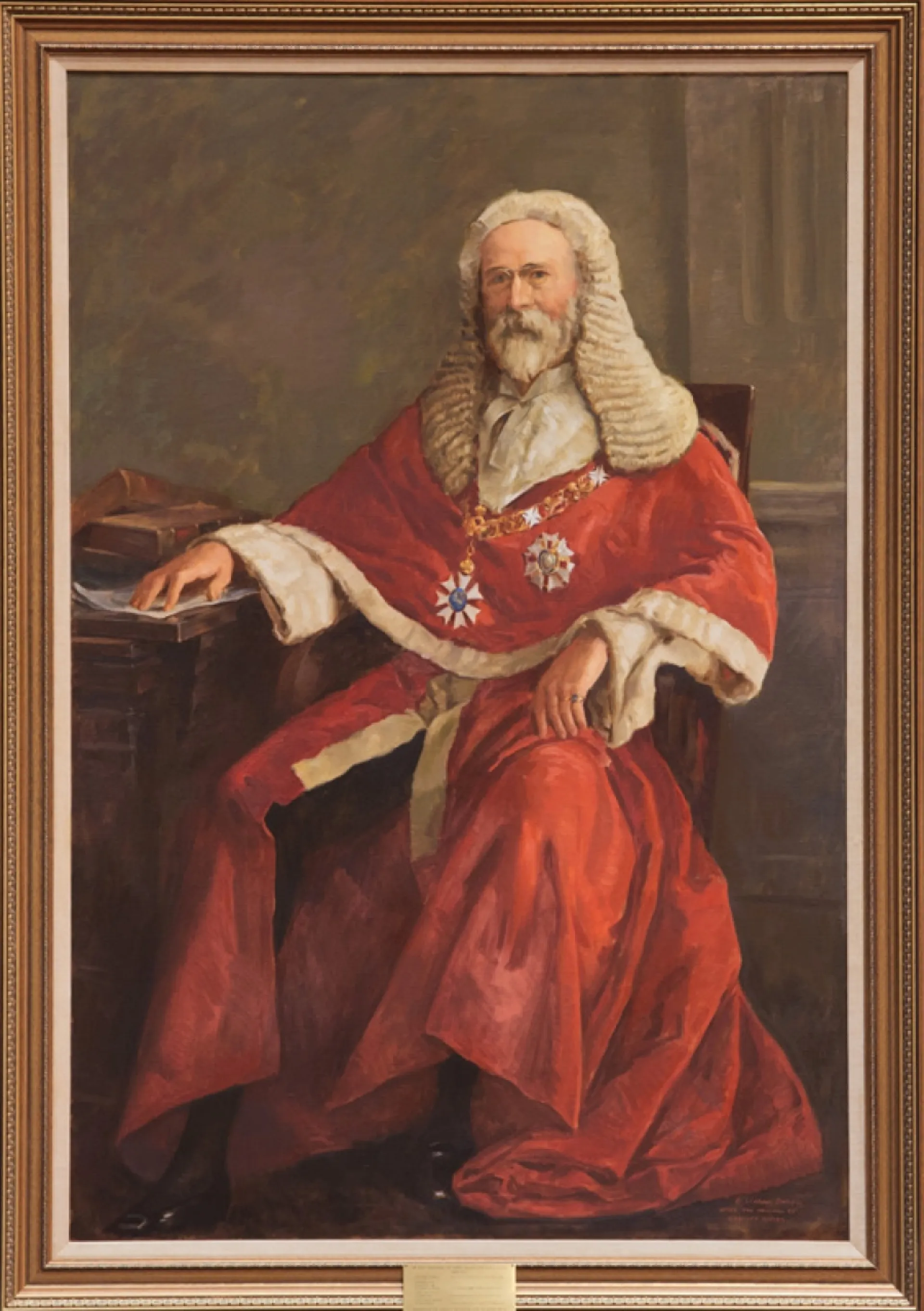A copy of an earlier portrait by Godfrey Rivers (1859-1925). High Court of Australia Historic Memorials Collection

This portrait of the inaugural Chief Justice of the High Court of Australia, the Rt Hon Sir Samuel Walker Griffith (1845–1920), is a copy of the original by Godfrey Rivers which hangs in the Supreme Court of Queensland. Sir Samuel Griffith served as Chief Justice of the Supreme Court of Queensland for the decade 1893–1903, and in 1901 was appointed a Privy Counsellor. He served as the first Chief Justice of Australia 1903-19. He had been admitted to the Queensland Bar in 1867 and was appointed a Queen's Counsel (QC) in 1876.
Sir Samuel Griffith had an earlier career in politics and government. He was a Member of Queensland’s Legislative Assembly (1872–93), Premier (1883–88 and 1890–93), Attorney-General (1874–78), Leader of the Opposition (1879–83), Colonial Secretary (1883–86), Colonial Treasurer (1887–88), and Lieutenant Governor (Queensland) (1899–1903). Griffith was appointed a Knight Commander (KCMG) (1886) and awarded a Grand Cross of St Michael and St George (knight) (GCMG) in 1895. Griffith was also a leading figure in the political movement for federation, having proposed and at times presided over the Federal Australasian Council. He defied the early critics of his appointment to the High Court and 'ensured that the Court became recognised as the pre-eminent legal authority in Australia'.
Sir Samuel Griffith also undertook other public roles. He was a member of the University of Sydney Senate 1904–17, was appointed a vice-president of the Royal Colonial Institute in 1909, and became an honorary fellow of the British Academy in 1916. He was awarded honorary doctorates of law by the University of Queensland in 1912 and the University of Wales in 1913
William (Bill) Dargie lived and worked mainly in Melbourne. He studied painting at the Melbourne Technical College under Napier Waller (1932–33) and for a time under Archie Colquhoun (1931–34). He is best known for his portraiture, although he did paint in other genres. Dargie won the Archibald Prize eight times between 1941 and 1956. The last of his winning portraits was of fellow artist Albert Namatjira (1902–59). In 1954 Dargie was commissioned to paint the now famous 'wattle portrait’ of Queen Elizabeth ll where the young Queen wore a dress designed for her 1954 tour of Australia by the English fashion designer Sir Norman Hartnell (1901–79).
Dargie was an official war artist during the Second World War, and served with the Australian Army in the Middle East, New Guinea, India and Burma during the period 1941–6. A large body of his works is held in the Australian War Memorial collection in Canberra. From 1946–53 he was head of the Victorian Art School at the National Gallery of Victoria. He also served on several gallery boards including for twenty years on the Commonwealth Arts Advisory Board. He wrote On Painting a Portrait (Artist Publishing, 1957). Dargie was knighted in 1970 for his services to the arts and Australia and was awarded the prestigious Centenary Medal in 2001. A.C. Colquhoun's portrait of Sir Owen Dixon hangs in Court 2.
Dargie's portrait of Sir Samuel Griffith is a copy of an earlier portrait by Godfrey Rivers (1859–1925) that hangs in the Supreme Court of Queensland in Brisbane. Rivers migrated to Australia in 1889 as an emerging artist. He spent some time teaching in New South Wales and Queensland, before becoming a leader in the arts in Queensland and a champion of the Queensland National Art Gallery which opened in 1895. Sir Samuel Griffith was the gallery’s founding president.